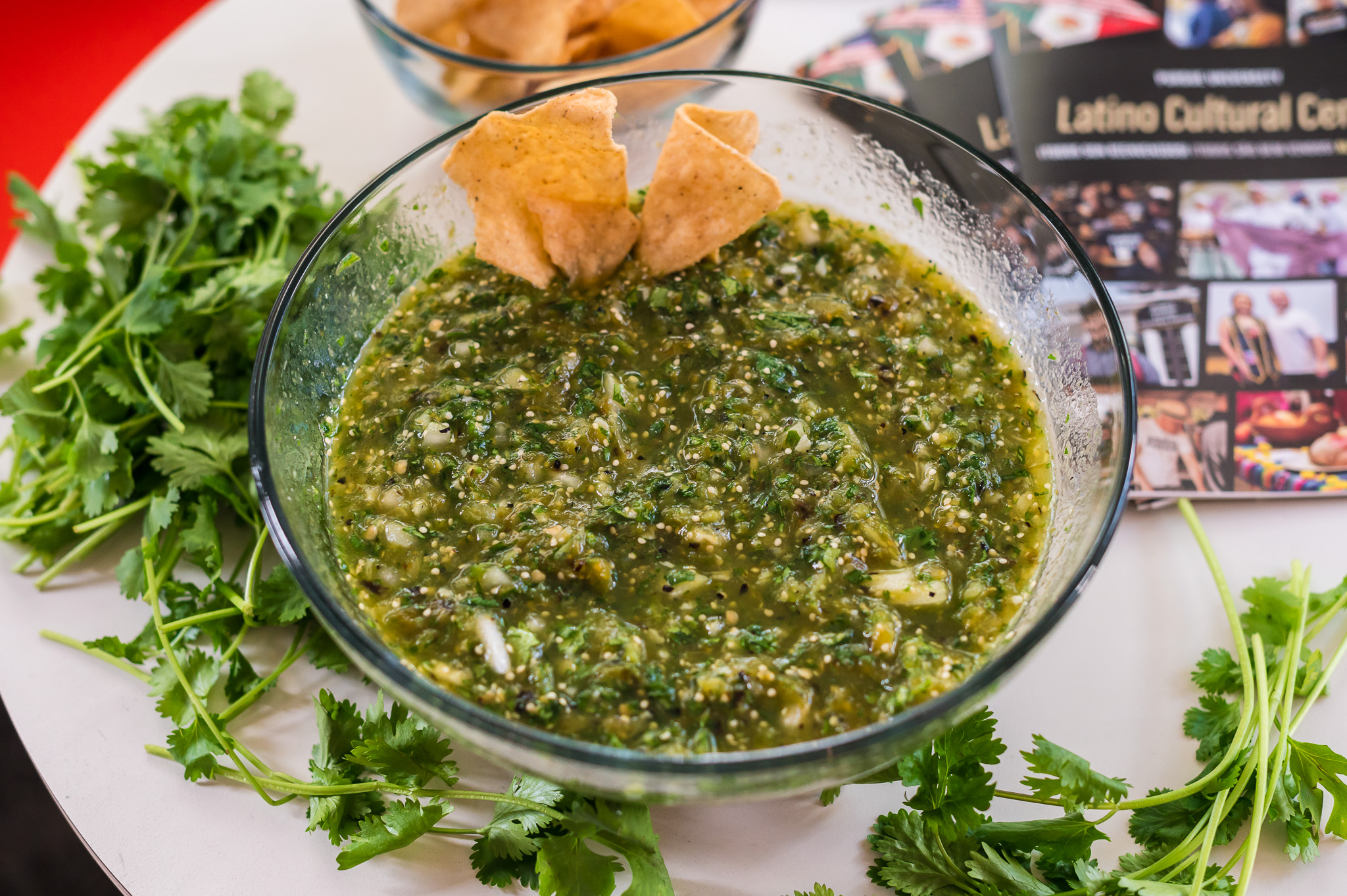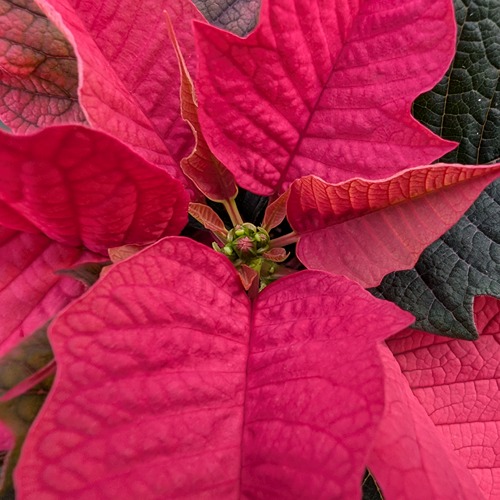Cocina con Carina: How a garden connects agriculture, food and heritage
It’s lunchtime at the Purdue Latino Cultural Center (LCC), and the aroma of warm arepas invites you in the multicolored house on Waldron Street. The kitchen is bustling as students rush in and out, some for a snack break from their studies, some to snag one on their way to class. The walls are painted in bright, cheerful colors, reminiscent of the fresh fruits and veggies in the backyard garden.
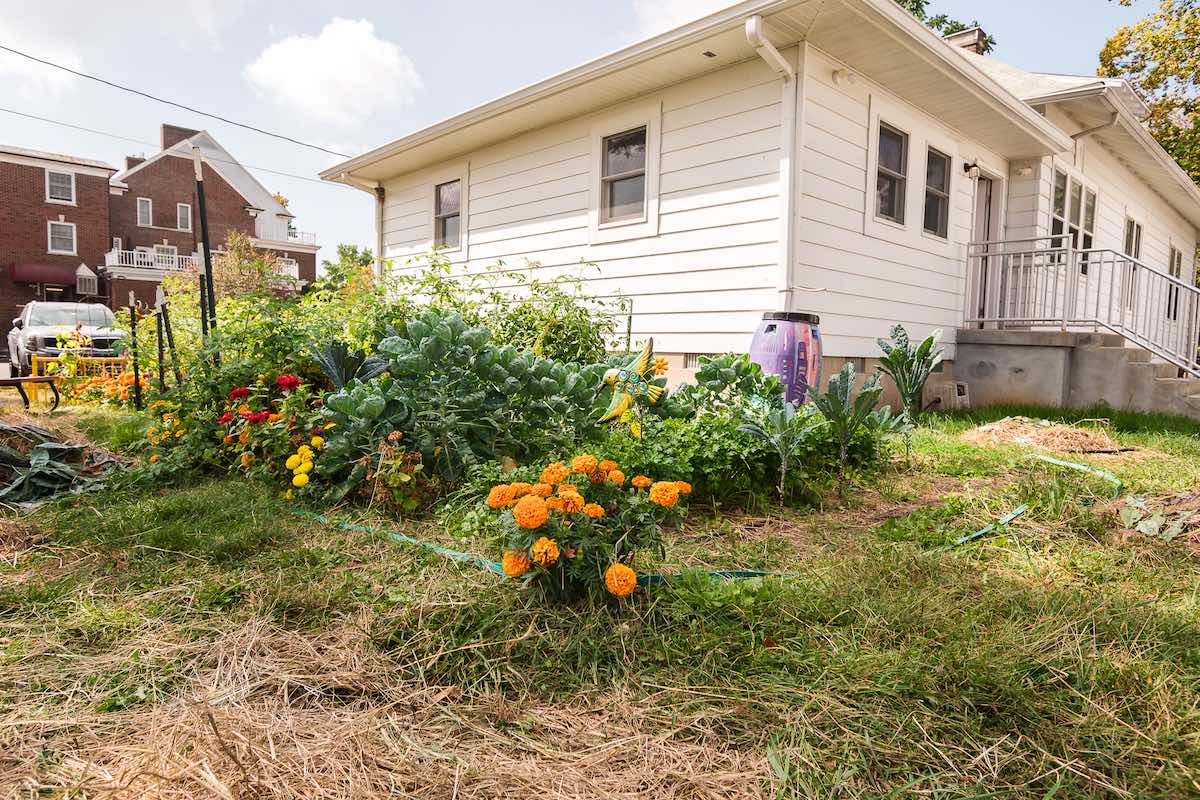
“It’s a free farmer’s market!” says Carina Olaru, the center’s director, gesturing toward rows of tomatoes and peppers. “This is a community garden, meant for everyone on campus: students, faculty, and staff.”
In collaboration with Purdue Student Farm Manager Chris Adair, the LCC’s garden was started by graduate students in the College of Agriculture to help remind LatinX students, faculty and staff of the importance that agriculture plays in cultural heritage. On Tuesdays, or Mercaditos Martes, the LCC partners with Adair to provide an accessible way to get fresh produce on campus. Students take what they want from the garden while the Student Farm drops off a weekly CSA box. Often, Carina will use the harvest as a teaching opportunity.
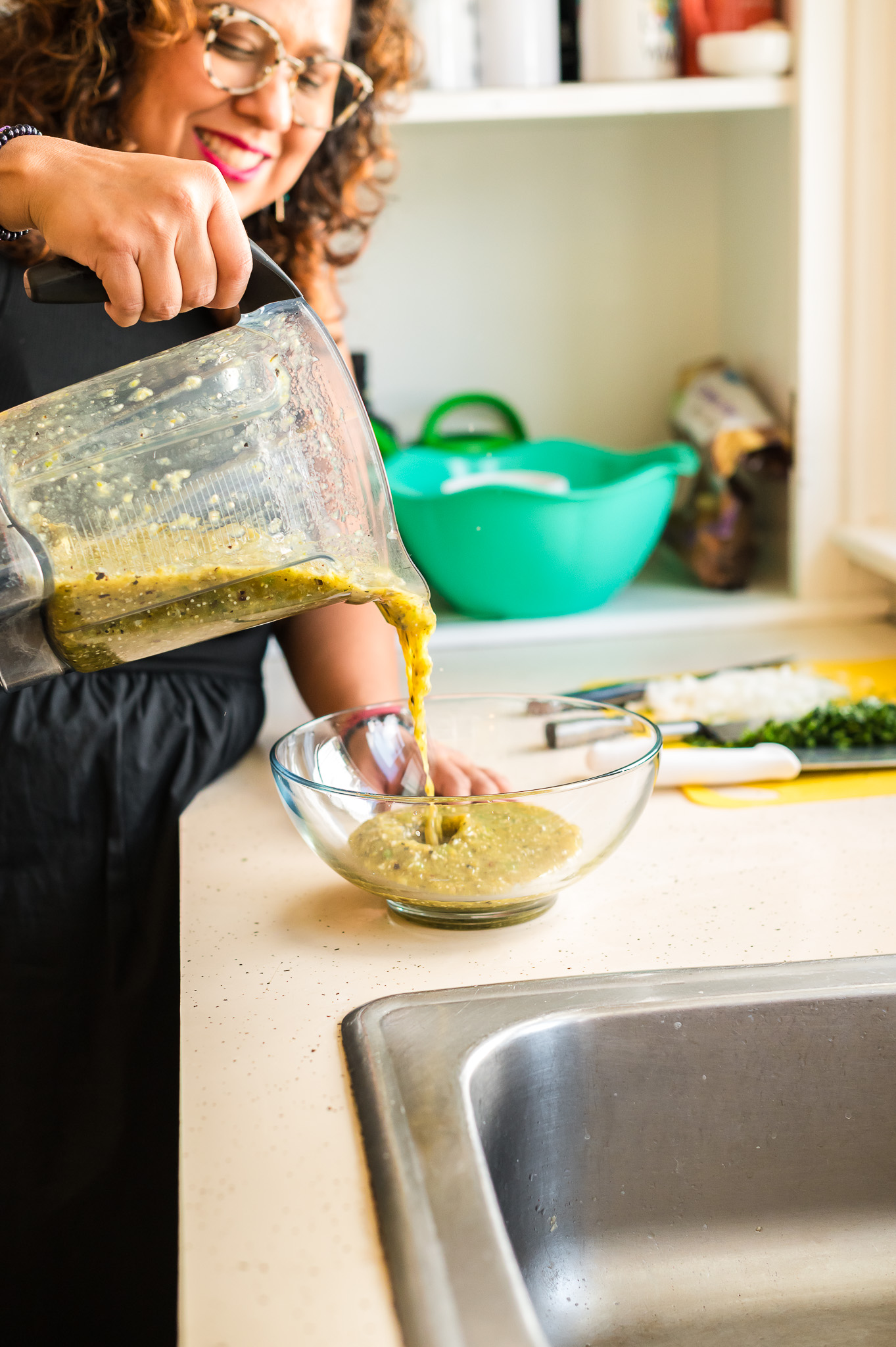 "We see what we have each week and what recipe we can get out of it. I love showing students how to cook and that making healthy meals doesn’t have to be hard!”
"We see what we have each week and what recipe we can get out of it. I love showing students how to cook and that making healthy meals doesn’t have to be hard!”
According to Carina, salsa is the easiest and freshest thing you can make. The LCC director enlists the help of Guillermo Morgado Rodriguez, senior administrative assistant for the center, and begins by broiling a sheet pan of tomatillos, a couple serrano peppers and a jalapeño, all straight from the garden. Lots of tomatillos will help temper the heat from the peppers. She adds garlic cloves, unpeeled so as not to burn them.
“There’s always salsa in a Mexican household,” says Carina. “Some like red, some like green. There is no right way to make it. My mother boils the tomatillos, but I find roasting gives it that charred, deeper flavor.” Capsaicin, the compound in peppers that causes that spicy, burning sensation, is reduced when roasted. In addition to the charred flavor, roasting the ingredients will result in a salsa that is slightly sweet with a mild kick.
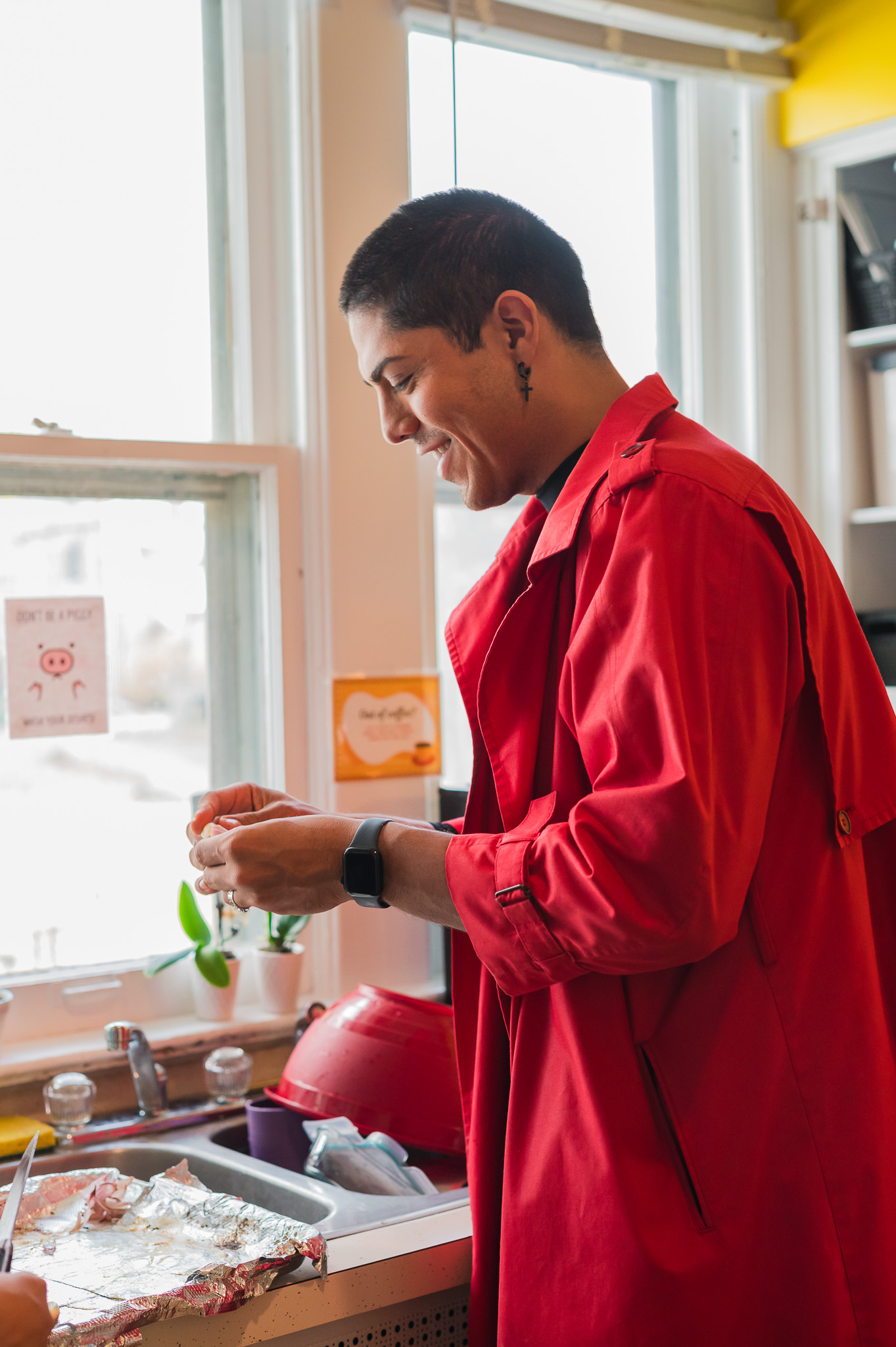 When asked how long to broil the vegetables, Guillermo laughs.
When asked how long to broil the vegetables, Guillermo laughs.
“We’re not very precise—we eyeball everything! Just broil until soft and flip on each side.”
After the vegetables are out of the oven, Carina dices a handful of cilantro and half of a medium white onion and sets them aside for later. Patience is key to achieving the right texture. If the onion and cilantro are added before the vegetables have had the chance to cool, the heat will cook them.
While the kitchen waits for the tomatillos and peppers to reach room temperature, Carina reflects on the significance of the LCC garden and teaching students how to cook with local produce.
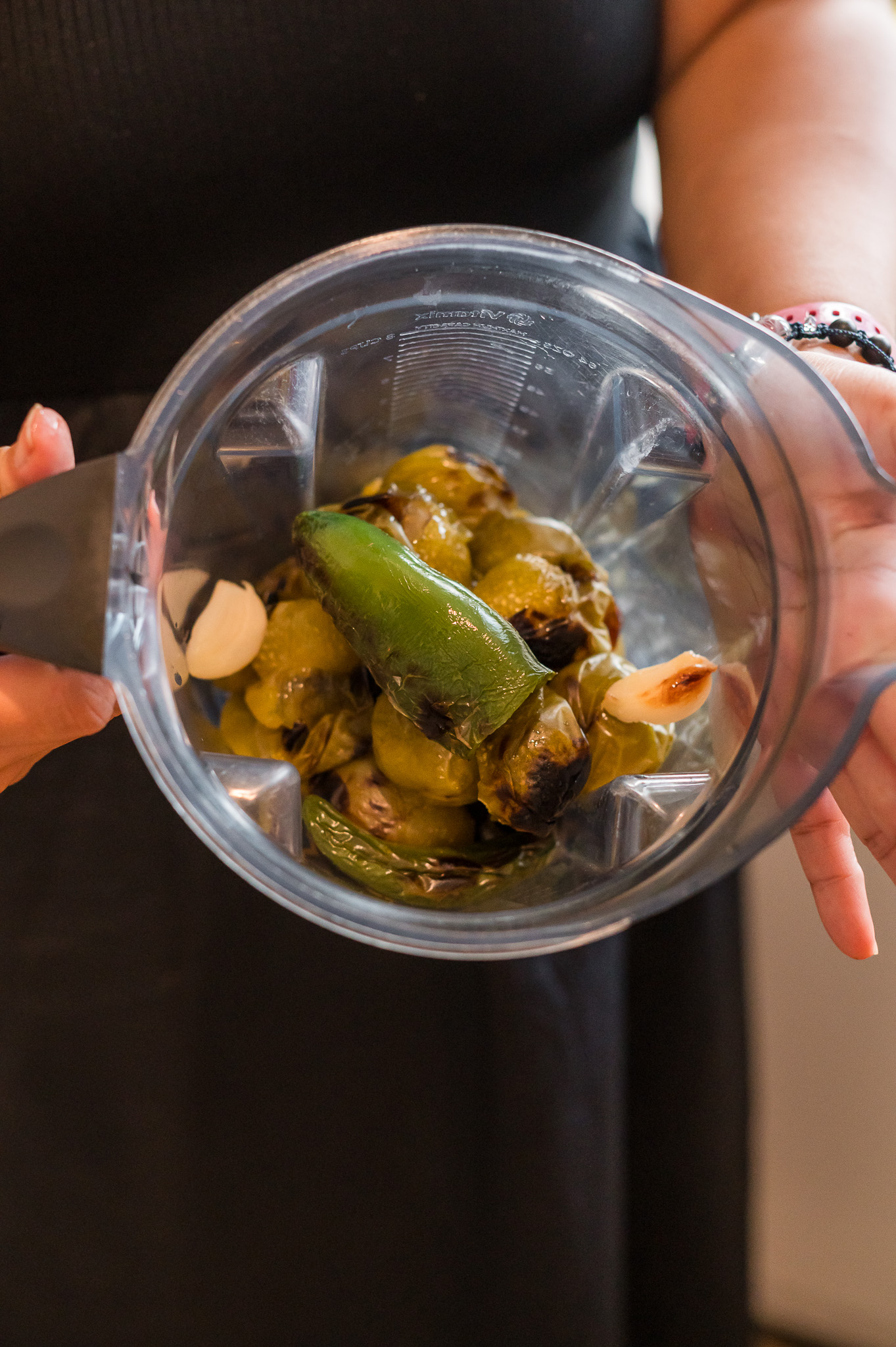
“Mexican food is healthy, but once it travels and moves to different countries, it changes,” says Carina. “If you go back to Latin America, most of the foods are fresh, and it’s time consuming because you’re making it all from scratch.”
Once the vegetables are cooled, Carina peels the garlic, cuts off the pepper stems, throws the cooked ingredients into a blender, salts it, and adds an unexpected but perhaps most important ingredient.
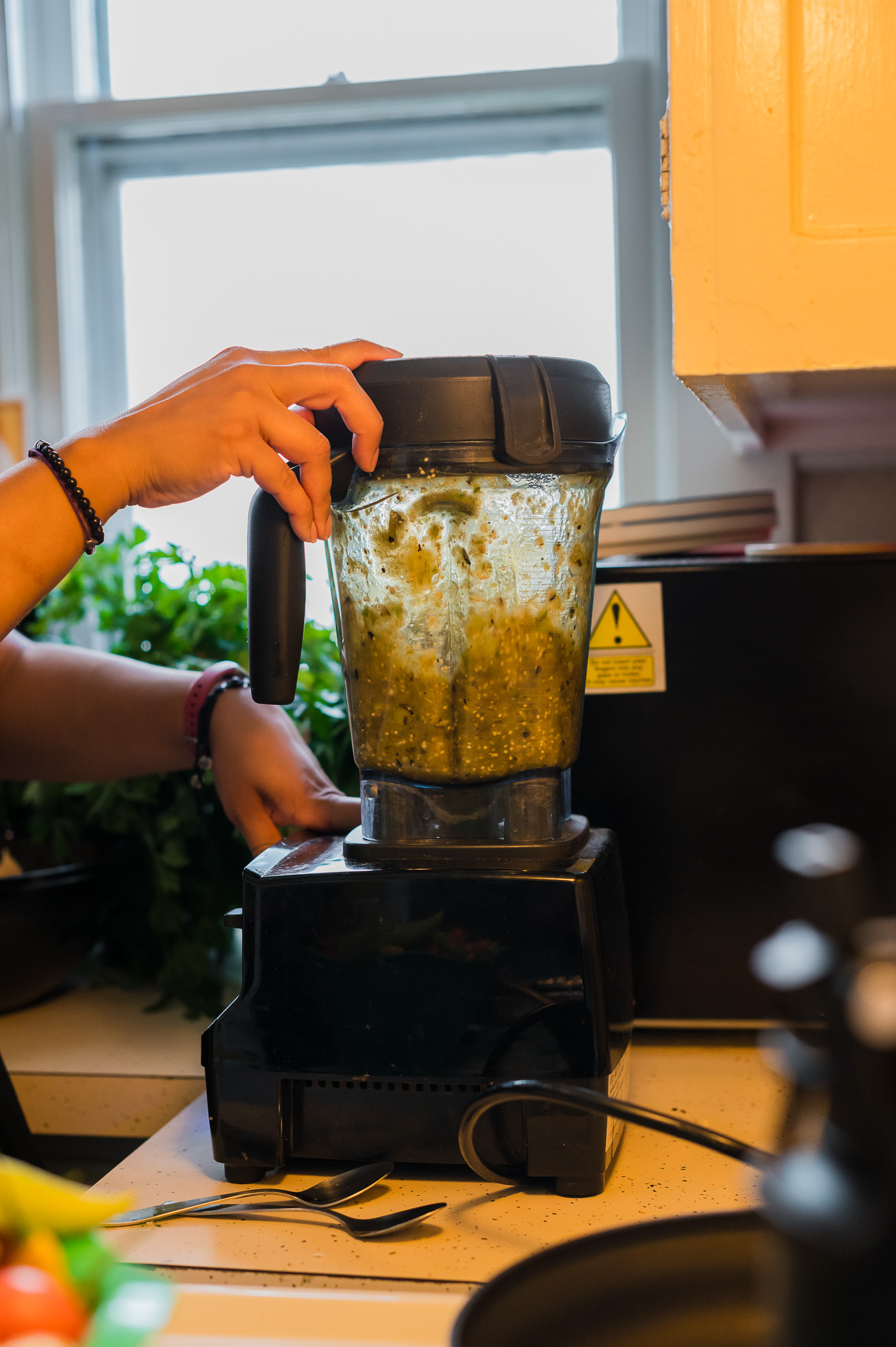
“Don’t forget the juice! Pour the juice sitting in the pan you’ve created from broiling into the blender. It'll add flavor while allowing everything to blend nicely.”
Both Carina and Guillermo prefer a chunkier salsa, so they pulse the mixture a few times to achieve a thicker texture. For a smoother texture, use a higher speed until mixed thoroughly.
After the vegetables are blended, it’s time for a taste test. According to Guillermo, a little more salt and a touch of cumin will do the trick.
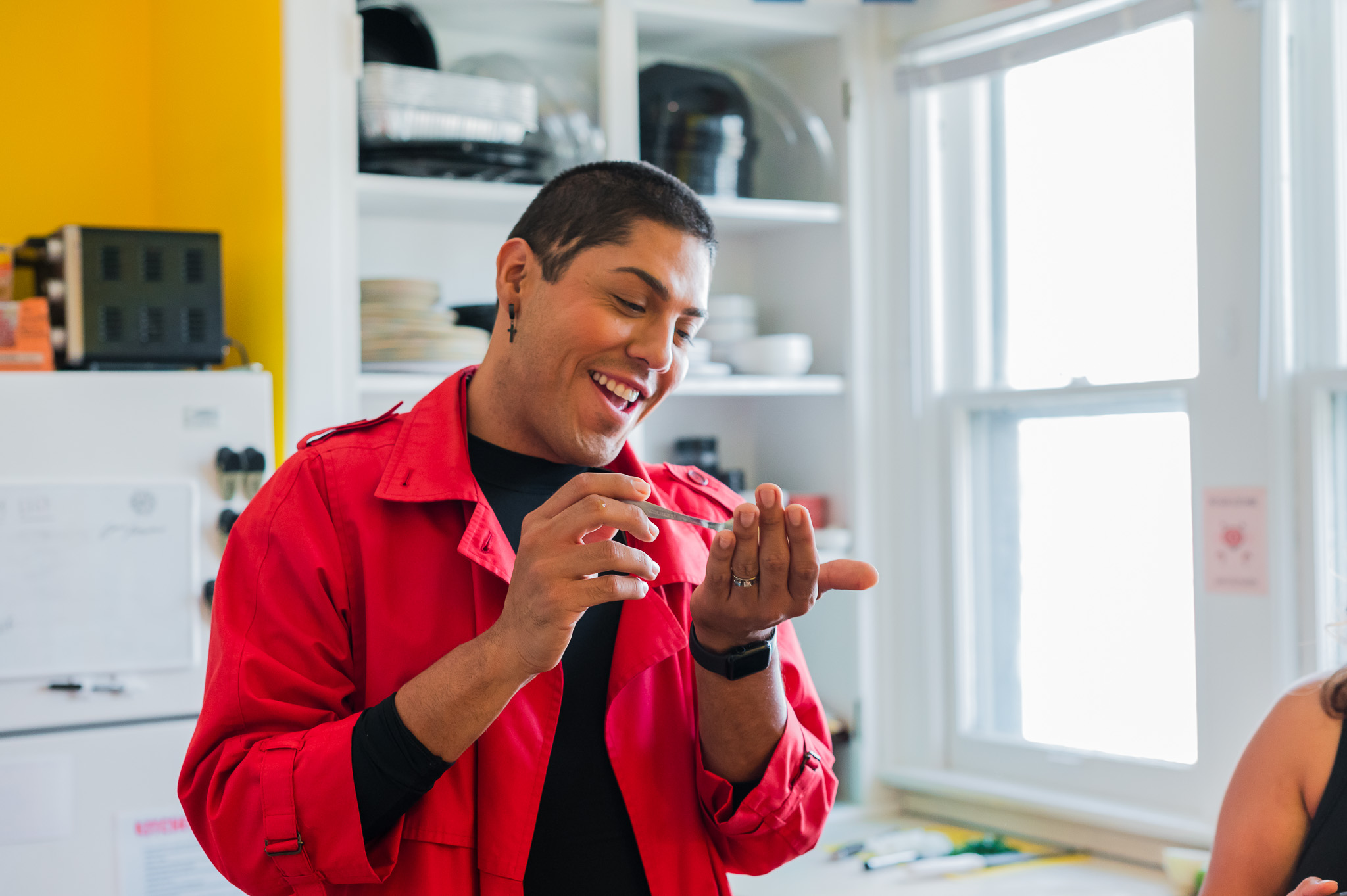 “Now it’s perfect—he’s even dancing!” laughs Carina. “Don’t be afraid to alter foods to your taste.”
“Now it’s perfect—he’s even dancing!” laughs Carina. “Don’t be afraid to alter foods to your taste.”
After the blended mixture is poured into a bowl with the onion and cilantro and mixed well, it’s time to enjoy a heaping chipfull.
What’s the best way to serve roasted tomatillo salsa? According to Carina, on a skirt steak taco.
“Fresh salsa, meat, beans and a homemade corn tortilla—now that’s a healthy meal.”
The Purdue Student Farm is a small, sustainable farm managed by the Department of Horticulture and Landscape Architecture (HLA) and is located on campus near the Kampen Golf Course and Daniel Turf Center off Cherry Lane.
